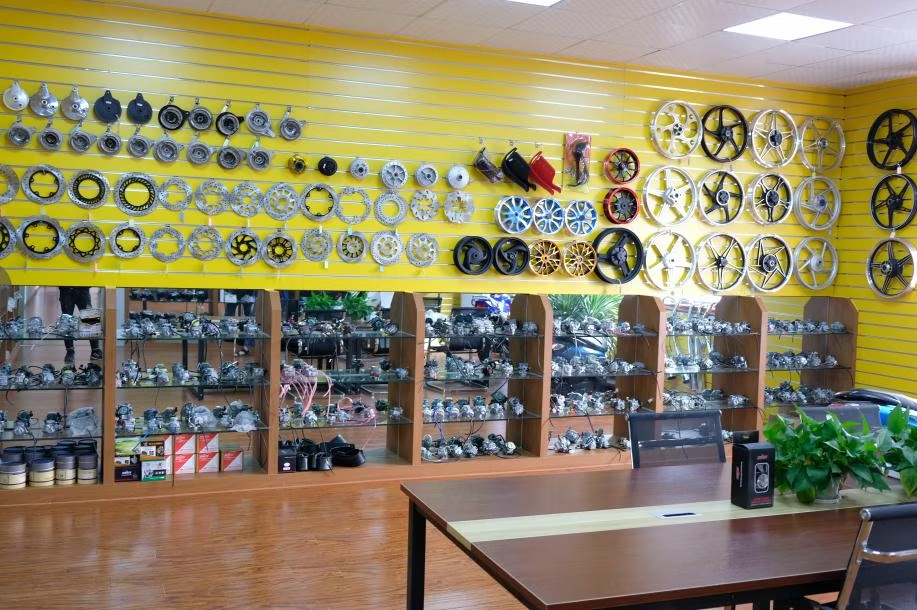Understanding the Important Parts of a Motorbike: A Comprehensive Overview for Fanatics
For motorbike enthusiasts aiming to raise their riding experience and guarantee their bikes run efficiently, understanding the necessary parts of a motorbike is extremely important. Each aspect, from the engine's elaborate operations to the essential duty of the stopping devices, not just affects performance however likewise safety and security and convenience. This guide will walk via the essential parts that every cyclist need to be acquainted with, enabling informed options in both maintenance and prospective upgrades. As we begin this expedition, one must ask: how does each component communicate to produce the seamless adventure every enthusiast seeks?
Engine Parts

The camshaft plays an important role in managing the timing of the engine's shutoffs, ensuring the exact opening and closing required for reliable fuel and air consumption, as well as exhaust expulsion. This timing is critical to keeping optimum engine efficiency and efficiency. Furthermore, the carburetor or gas shot system, relying on the motorbike version, is accountable for mixing air with fuel in the proper ratio for combustion.
The air conditioning system, either air or liquid-based, works to preserve the engine's temperature within functional limitations, stopping overheating and making certain durability - motocross parts nz. Each element, diligently created and integrated, adds to the smooth procedure of the engine, defining the bike's power result and general performance
Transmission System
Indispensable to the bike's capability, the transmission system ensures effective power transfer from the engine to the wheels. This system consists of numerous critical parts, consisting of the clutch, gearbox, and last drive, each playing an important role in converting the engine's power right into activity. The clutch, commonly operated by a hand bar, offers to engage and disengage the engine from the transmission, permitting smooth gear changes and controlled velocity.
The gearbox, often referred to as the transmission proper, includes a set of equipments that cyclists can manually change via to change the bike's speed and torque output. These equipments are organized in a sequence that allows the motorbike to accelerate efficiently and preserve ideal engine performance across different rates. The majority of motorbikes use a consecutive transmission, calling for the rider to move equipments in a fixed order.
Braking Systems
While recognizing the transmission system is crucial to harnessing a motorbike's power, similarly vital is the ability to manage and stop that power effectively, which is where stopping mechanisms enter into play. Brakes are critical for safety and security and efficiency, offering the rider with the needed control to navigate various terrains and problems. Usually, motorcycles feature two kinds of braking systems: disc brakes and drum brakes.
Disc brakes are extra widespread in modern motorcycles as a result of their remarkable efficiency. They include a brake disc, caliper, and pads. When activated, the caliper squeezes the brake pads versus the rotating disc, transforming kinetic energy into heat, thereby slowing the wheel. This system uses better heat dissipation, constant efficiency, and improved quiting power, especially in damp problems.
Conversely, drum brakes, though much less typical, are still discovered in some motorcycles. They work by pushing brake shoes against the inner surface of a drum connected to the wheel. While usually less efficient in heat dissipation and quiting power, drum brakes are less complex and much more cost-effective.
Comprehending these stopping systems' subtleties enables cyclists to keep their motorbikes effectively and value the engineering that makes sure effective and safe stopping.
Suspension and Guiding
Suspension and steering systems are vital components that significantly influence a bike's handling and ride convenience. The shock absorber, including forks at the front and shock absorbers at the rear, takes in road abnormalities, improving stability and control. Front forks, normally telescopic or inverted, compress and rebound to minimize influences, while back shock absorbers maintain tire contact with the road, vital for traction and safety.
Guiding, centered around the handlebars, links the biker to the motorcycle's directional control. The steering head bearings make sure smooth procedure, permitting specific ability to move. Proper placement and maintenance of these bearings are critical for predictable guiding action and lowering biker exhaustion.
The suspension's adjustability is one more vital facet; preload, damping, and rebound setups permit customization to match various riding problems and designs. This versatility is crucial for enhancing efficiency, whether navigating city roads or taking on tough trails. Developments like digital shock absorber provide real-time changes, boosting experience quality across diverse terrains.

Electrical Equipments
After making sure a smooth and controlled ride through reliable suspension and guiding systems, interest turns to the electrical systems, an essential element of contemporary motorcycles. These systems play a critical duty not just in starting the engine but likewise in powering different elements more helpful hints that boost the capability and safety of the motorcycle.
At the heart of a bike's electric system is the battery, which stores electric power essential for starting the engine and powering supporting systems - motocross gear nz. The generator or generator, check coupled with the rectifier-regulator, makes sure the battery stays charged while the motorbike is in procedure, transforming mechanical energy right into electric power and preserving voltage levels
The ignition system, one more essential component, is in charge of stiring up the air-fuel mixture in the engine's cylinders. Modern motorbikes often use a digital ignition system, offering greater performance and integrity compared to conventional systems.
Lighting systems, including headlights, tail lights, and indications, are additionally crucial, making certain visibility and security for the cyclist. Additional digital parts such as sensors, control devices, and presents contribute to sophisticated features like gas injection management, anti-lock braking systems (ABDOMINAL), and digital dashboards, even more enhancing the riding experience.
Conclusion
A complete comprehension of a bike's important elements, including the engine, transmission system, stopping mechanisms, suspension, steering, and electrical systems, is indispensable for fanatics aiming to optimize security, convenience, and performance. Mastery of these components permits notified choices regarding maintenance and upgrades, eventually boosting the riding experience. By integrating this knowledge, bikers can guarantee their motorbikes run at peak efficiency and dependability, therefore maximizing both pleasure and durability of their cars.
For bike lovers looking to boost their riding experience and guarantee their bikes run efficiently, recognizing the important parts of a bike is paramount.Important to the motorcycle's capability, the transmission system makes sure reliable power transfer from the engine to the wheels.While understanding the transmission system is key to taking advantage of a motorcycle's power, equally crucial is the capacity to regulate and quit that power efficiently, which is where braking devices come right into play. Normally, motorbikes include 2 types of stopping systems: disc brakes and drum brakes.
A detailed comprehension of a bike's important elements, go now including the engine, transmission system, stopping devices, suspension, guiding, and electric systems, is crucial for enthusiasts aiming to optimize comfort, performance, and security.